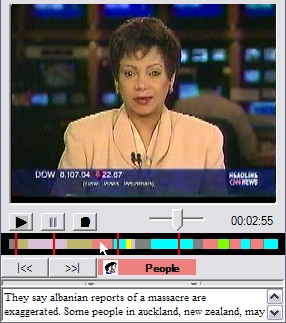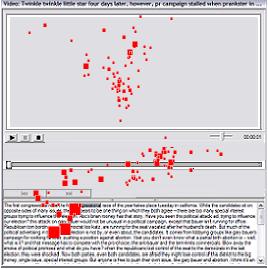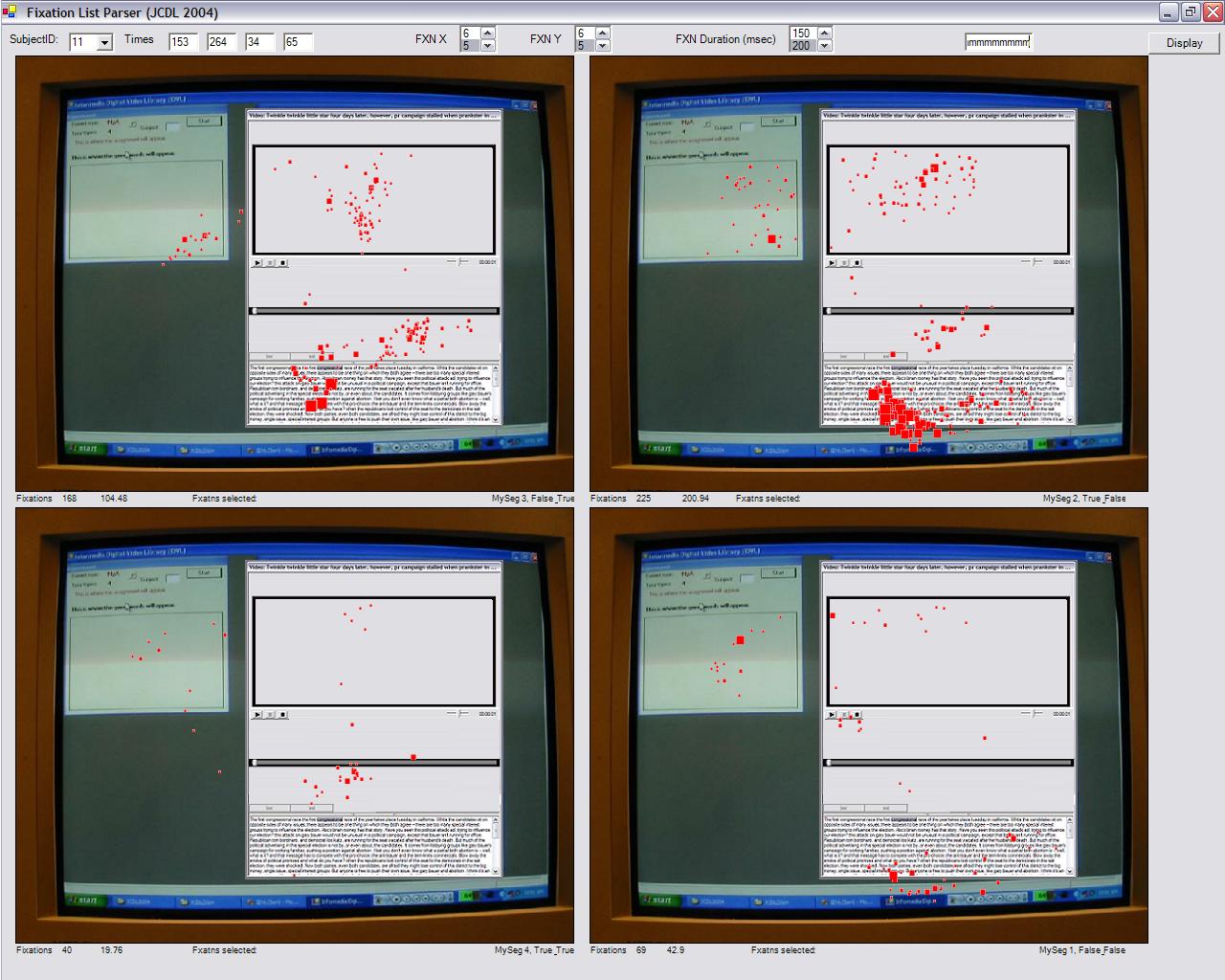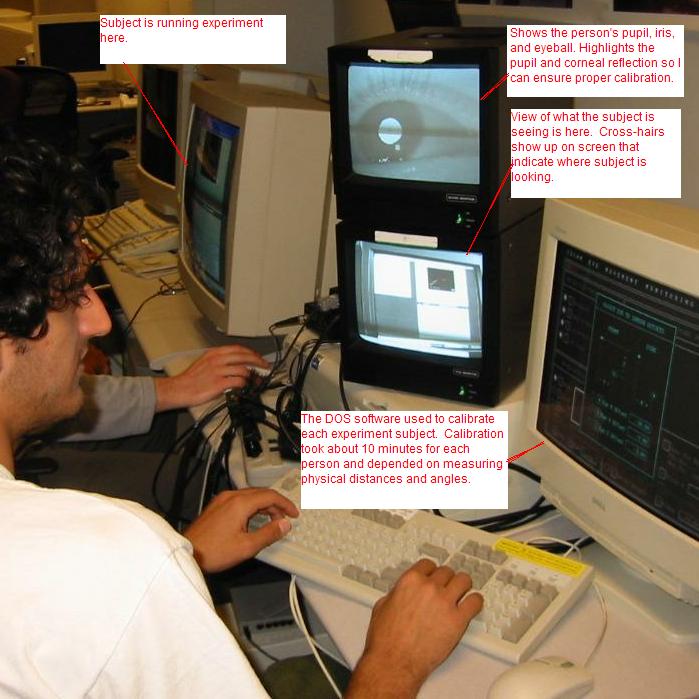
 |
  |
Feature-based color bars placed
on the timeline improved |
|
Project Description
The problem:
Much of the progress made in video browsing was in finding the relevant video in a large set. When playing a video, however, I found myself randomly clicking on a timeline to find out what was in the video.
The solution:
'Feature-based color bars' are small colored rectangles placed on the timeline on a media player's timeline. Each color indicates a feature such as Outdoor, News Anchor, or Vehicle. Feature-based color bars are a simple and easy way to encourage informed browsing of a video. I conducted an experiment to measure task efficiency, subjective user preference, and visual fixation. I wrote a paper and have submitted it to the 2004 ACM/IEEE Joint Conference on Digital Libraries.
I created some medium-fidelity prototypes of the design and implemented it shortly after. I designed the experiment, implemented the experiment software, learned to decipher the archaic eye-tracking software, analyzed the data, wrote software to create a visualization of visual fixations, and was the sole author of the academic paper.
It took me several days to decipher the archaic documentation and Windows 98/DOS software supplied by ISCAN, the eye-tracking hardware I was using. It didn't offer me as much freedom as I would have liked, so I took a Sunday afternoon and wrote my own software that read the textfiles that ISCAN produced and produced some custom visualizations.
Click a photo to see the full-size version.
 The simple software I wrote produced this. |
 A screenshot of the tool I wrote. Allows run-time adjustment of fixation parameters. |
 Shows the experiment environment. |
Deliverables
I submitted a short paper to ACM/IEEE JCDL 2004 and am currently awaiting
results.
N. Moraveji (2004). "Improving Video Browsing with an Eye-Tracking Evaluation of Feature-Based Color Bars." ACM/IEEE Joint Conference on Digital Libraries. Tuscon, AZ.




